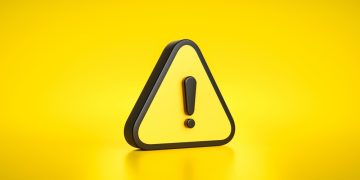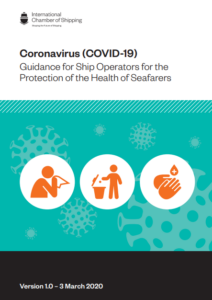The International Chamber of Shipping (ICS) published new guidance for the shipping industry to assist combat the spread of the Coronavirus, including among several measures, advice on managing Port Entry Restrictions, practical Protective Measures Against COVID-19 for Seafarers, including an Outbreak Management Plan.
Port Entry Restrictions
The majority of the ports have issued their own circulars with the following guidance:
- Delayed port clearance.
- Prevention of crew or passengers from embarking or disembarking (preventing shore leave and crew changes).
- Prevention of discharging or loading cargo or stores, or taking on fuel, water, food and supplies.
- Imposition of quarantine or refusal of port entry to ships (in extreme cases).
ICS highlights that flag States, companies and masters should collaborate and make sure that:
- Seafarers can be changed.
- Passengers can embark and disembark.
- Shore leave can continue if safe to do so.
- Cargo operations can occur.
- Ships can enter and depart shipyards for repair and survey.
- Stores and supplies can be loaded.
- Necessary certificates and documentation can be issued.
In addition, under the possibility of a coronavirus outbreak onboard the vessel, it is advised that each vessel and company should develop a written outbreak management plan, which will be able to plan and implement.
When it comes to infected people onboard, ICS defines a ‘close contact’ person as the one who:
- Has stayed in the same cabin with a suspect/confirmed COVID-19 case.
- Has had close contact within one metre or was in a closed environment with a suspect/confirmed COVID-19 case (for passengers this may include sharing a cabin).
- Participated in common activities on board or ashore.
- Participated in the same immediate travelling group.
- Dined at the same table (for crew members this may include working together in the same ship area).
- Is a cabin steward who cleaned the cabin.
- Is restaurant staff who delivered food to the cabin.
- Is a gym trainer who provided close instruction to a case.
- Is a medical support worker or other person providing direct care for a COVID-19 suspect or confirmed case.
Overall, hygiene onboard is a major step to be protected and not infected. The key principles to reduce the risk of transmission include avoiding close contact with people suffering from acute respiratory infections, frequent handwashing, especially after direct contact with ill people or their environment, avoiding unprotected contact with farm or wild animals, people with symptoms of acute respiratory infection should cover coughs and sneezes with disposable tissues or clothing, and wash hands.
If a seafarer is positively tested for coronavirus, ICS notes that
Laboratory examination of clinical specimens for suspect cases should be made with the competent authorities at the port who will then inform the ship’s officers about test results.
Disembarkation of a Suspect and a Confirmed Case
The ship should take the following precautions:
- Control disembarkation to avoid any contact with other persons on board.
- The patient should wear a surgical mask.
- Personnel escorting the patient should wear suitable PPE (gloves, impermeable gown, goggles and medical mask).
In addition, when the vessel moves to the next port of call, once the health authority has determined that public health measures have been completed satisfactorily in particular the measures as follows:
- Management of the suspect case or cases and close contacts.
- Completion of contact tracing forms, disembarkation of close contacts; until the termination of COVID-19 Public Health Emergency of International Concern is declared. All passengers and crew members should fill in a PLF to be kept on board for at least one month after disembarkation.
- Information in the completed PLF should be provided upon the request of health authorities to facilitate contact tracing if a confirmed case is detected after the disembarkation and after the voyage has ended.
- Information has been provided to everyone on board about the symptoms and signs of the disease and who to contact in case the relevant symptoms develop in the following 14 days.
- Cleaning and disinfection, and disposal of infectious waste.
To learn more on the guidance click herebelow



































































